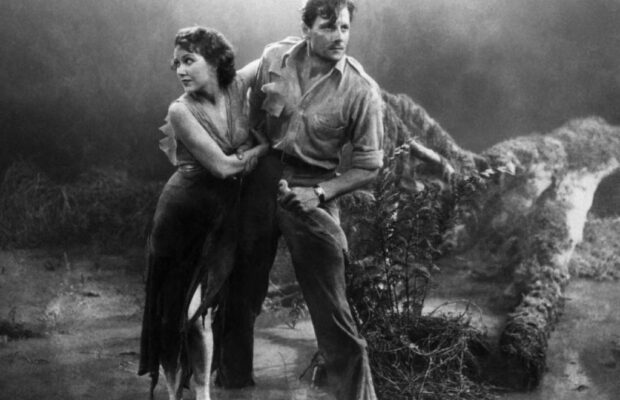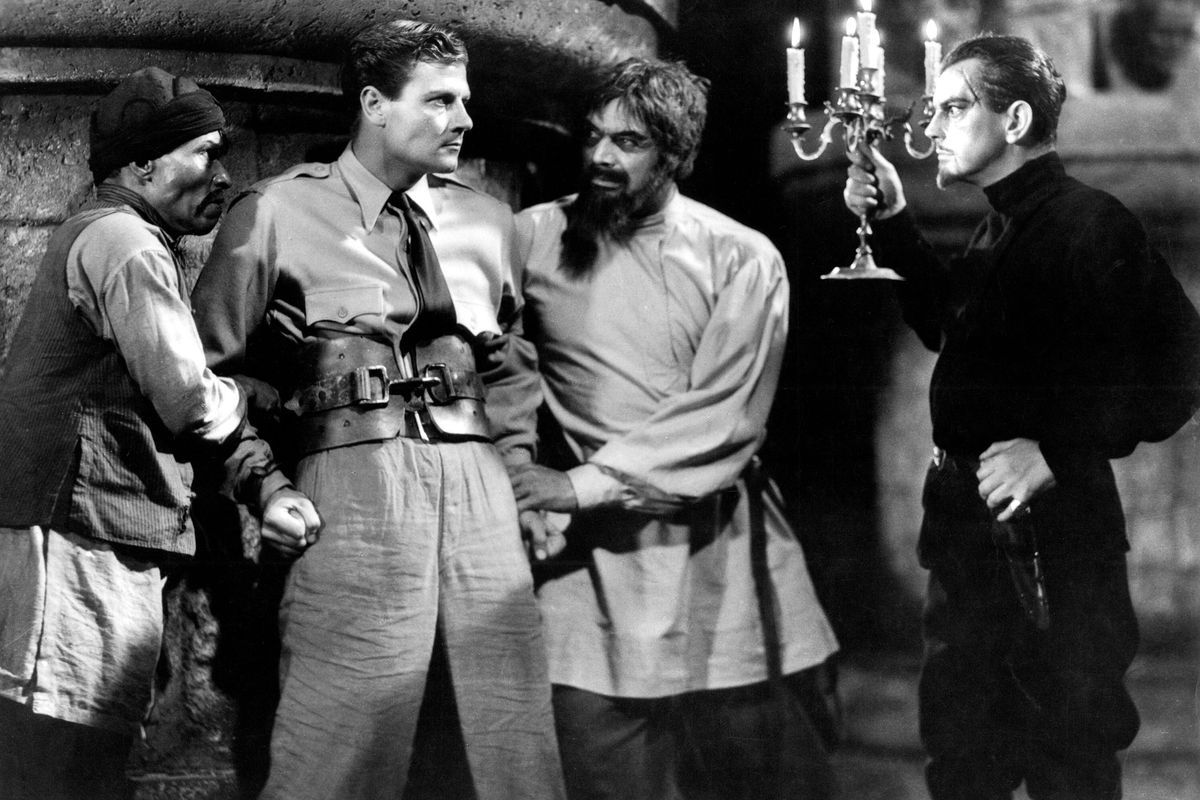The Most Dangerous Game (1932)

Toronto Film Society presented The Most Dangerous Game (1932) on Saturday, February 24, 2024 as part of the Season 76 Virtual Film Buffs Screening Series, Programme 6.
Production Company: RKO Radio Pictures. Producers: Merian C. Cooper, Ernest B. Schoedsack. Directors: Ernest B. Schoedsack, Irving Pichel. Screenplay: James Ashmore Creelman, based on a story by Richard Connell. Music: Max Steiner. Cinematographer: Henry W. Gerrard. Editor: Archie Marshek. Release Date: September 16, 1932.
Cast: Joel McCrea (Bob), Fay Wray (Eve), Leslie Banks (Count Zaroff), Robert Armstrong (Martin), Noble Johnson (Ivan), Steve Clemente (Tartar).

A 1932 American Pre-Code adventure-thriller, The Most Dangerous Game is a close adaptation of the 1924 short story of the same name, written by Richard Connell and published in Colliers Magazine. A successful journalist and screenwriter, Connell had stories published in The Saturday Evening Post and, in 1942, he received an Oscar nomination for Best Original Story for Frank Capra’s Meet John Doe, based on Connell’s 1922 short story, “A Reputation.”
The film’s director, Ernest B. Schoedsack, and producer, Merian C. Cooper, were friends and colleagues since meeting after World War I; they both led interesting lives, however, their upbringings were very different.
At the age of 14, Schoedsack ran away from home and worked as a labourer on road crews; eventually, he ended up in San Francisco as a surveyor. Then, on to Hollywood in 1914 as a cameraman working for Mack Sennett. During WWI, he was a cameraman in the Signal Corps and flew in combat bombing missions. After WWI, he stayed in Europe, working as a newsreel cameraman filming ongoing conflicts like the Polish-Soviet War and the Greco-Turkish War, while also assisting the Red Cross to help refugees to escape the wars. It was during his time in Europe that Schoedsack would first meet Merian C. Cooper.
Unlike Schoedsack’s early life as a runaway, Merian Caldwell Cooper was born the son of a lawyer and attended a private prep school. After graduating, he attended the United States Naval Academy but was later expelled for “hell raising and for championing air power.” You see, Cooper was an adventurer and flyboy at heart.
In 1916, he joined the Georgia National Guard to capture Pancho Villa; he then enrolled in the Military Aeronautics School and graduated at the top of his class as a pilot. In WWI, he flew bombers, was shot down and captured by the Germans. Initially believed to be dead (his death certificate was signed by General Pershing and sent to Cooper’s family – can you imagine how his mother felt?), Cooper actually spent the last two months of the war in a prison camp.
After WWI, he formed a squadron to aid the Polish in the Polish-Soviet War; he was shot down for a second time but managed to escape. Alas, third time’s the charm! He was shot down again, captured by the Soviets and sent to a labour camp near Moscow. He escaped with two Polish POWs, trekked 700 km to Latvia and then to Poland. For his valour and service to the Polish people, Cooper was decorated by Józef Piłsudski with the highest Polish military decoration, the Virtuti Militari.
With life experiences like these, is it any wonder that Schoedsack and Cooper could make such good films? Along their adventures, they both had worked in journalism and the newsreel medium. After working for The New York Times, Schoedsack and Cooper left to make their own films, starting with documentaries that were well received, including one that received an Academy Award nomination. Their first feature was the silent film, The Four Feathers (1929). After The Most Dangerous Game, the duo made King Kong (1933) with Fay Wray and Robert Armstrong, re-using some of the sets from The Most Dangerous Game. It might be worthwhile to watch both films and see if you can spot them. The last film they made together was Mighty Joe Young (1949). Impressive!
The Most Dangerous Game is the first adaptation of the short story, but the hunter/hunted theme is very familiar to thrillers. Currently, Most Dangerous Game is a television series (2 seasons, 2020-2023), filmed in and around Ontario (with bits in Detroit). Other examples of films with the hunter/hunted story include: Savages (1974) with Andy Griffith playing a type of evil that was way outside of his kindly-Sheriff typecast (this made-for-TV movie is now available for free on YouTube); Open Season (1974); Run For The Sun (1956); and more modern offerings, such as The Running Man (1987) and The Hunger Games.
The Naked Prey (1965), set in Africa with Cornell Wilde running from African warriors, was based on a real incident that took place in 1809 during America’s Fur Trade Era. Fur trapper John Colter, was captured by Blackfeet warriors, stripped naked and told, “Run!” He managed to elude and outrun his pursuers, and after eleven days, he made it to safety at a trapper’s fort. Cornell Wilde wanted to film Colter’s story in America, following the historic places and experiences, but the cost proved too expensive; the location was moved to South Africa and the protagonist became a safari guide. Alas, no John Colter, no John Colter story. As they say, “That’s Hollywood!”
Notes by J. Bruce Whittaker










Leave a Reply